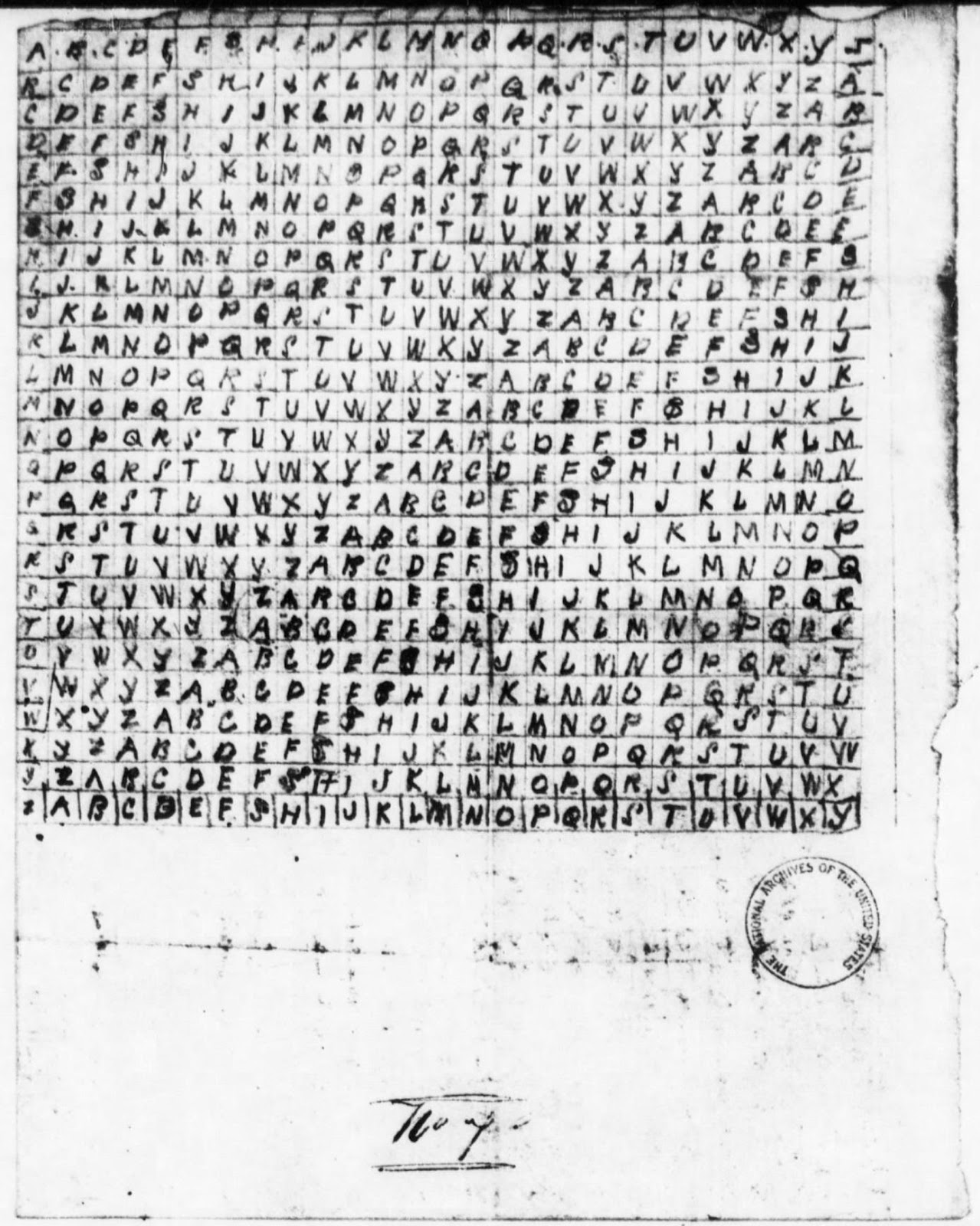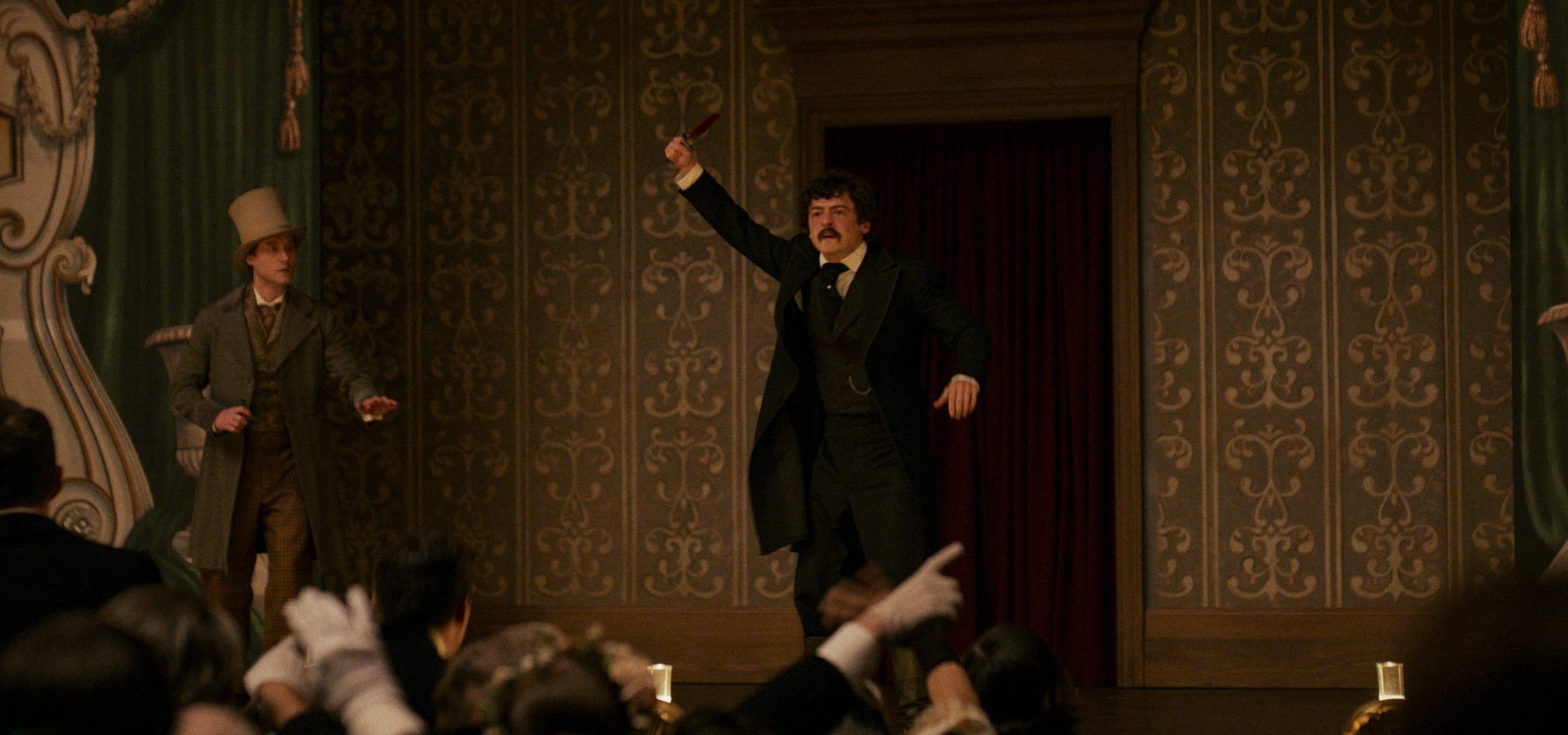In Apple TV+’s historical series ‘Manhunt,’ Edwin Stanton, who heads the search for John Wilkes Booth, the murderer of President Abraham Lincoln, discovers a code in the hotel room of the actor. The code puzzles Stanton and Thomas Eckert, who serves as the Chief of the War Department Telegraph Staff. Eckert tries his best to find out what it means in the first two episodes of the show. In reality, the code was presented before the court during the infamous trial of the Lincoln assassination conspirators as the prosecution tried to prove that the murder was sanctioned by the leaders of the Confederate States of America!
The Mystery Behind John Wilkes Booth’s Code
The code discovered in the hotel room of John Wilkes Booth is a key to decrypt messages written in the Vigenère cipher, a method of encrypting alphabetic text. During the Civil War, the Confederate States of America relied on the Vigenère cipher extensively. The cipher is usually used with a predetermined keyword, which would be repeated until it matches the number of alphabets in the plaintext. Then the alphabets in the keyword and plaintext are matched according to the key to find the hidden message. In addition to the key found in Booth’s room, a large Vigenère cipher cylinder was seized from the office of Confederate Secretary of State Judah P. Benjamin in Richmond, Virginia.

Since Booth’s key and Benjamin’s cylinder matched, the prosecution tried to connect the assassination to the Confederacy. However, the evidence wasn’t strong enough. “Everyone in the War Department who was familiar with cryptography knew that the Vigenère was the customary Confederate cipher and that for a Confederate agent [which Booth is known to have been] to possess a copy of a variation of it meant no more than if a telegraph operator was captured with a copy of the Morse Code,” wrote Phillip Van Doren Stern in ‘Secret Missions of the Civil War.’
Stern, like several others, was critical of the Union government’s efforts to make the Lincoln assassination a result of a Confederate conspiracy. “Hundreds—and perhaps thousands—of people were using the Vigenère. But the Government was desperately seeking evidence against the Confederate leaders so they took advantage of the atmosphere of mystery which has always surrounded cryptography and used it to confuse the public and the press. This shabby trick gained nothing, for the leaders of the Confederacy eventually had to be let go for lack of evidence,” the author added in his work. However, several other historians and authors claimed that the cryptographic texts Booth had in his possession revealed a Confederate conspiracy.

Benjamin “Benn” Pitman, who introduced Pitman shorthand in the United States, identified Jefferson Davis, the first and only president of the Confederate States, as a part of the assassination plot. “What more is wanting? Surely no word further need be spoken to show that John Wilkes Booth was in this conspiracy; […] and that Jefferson Davis and his several agents named, in Canada, were in this conspiracy. If any additional evidence is wanting to show the complicity of Davis in it, let the paper found in the possession of his hired assassin, Booth, come to bear witness against him,” the author wrote in ‘The Assassination of President Lincoln, and the Trial of the Conspirators.’
“That paper contained the secret cipher which Davis used in his State Department at Richmond, which he employed in communicating with his agents in Canada, and which they employed in the letter of October 13th, notifying him that ‘their friends would be set to work as he had directed.’ The letter in cipher found in Booth’s possession is translated here by the use of the cipher machine now in Court which […] he brought from the rooms of Davis’ State Department in Richmond,” Benn added in his book.
Read More: What Happened to Abraham Lincoln’s Family After His Death?


You must be logged in to post a comment.